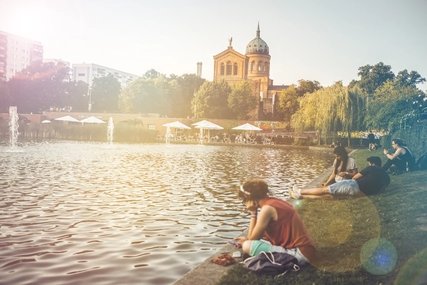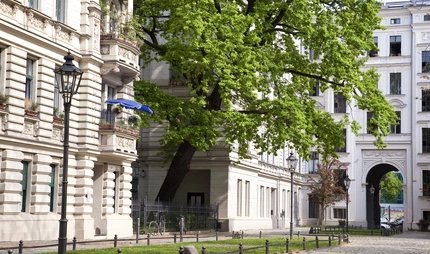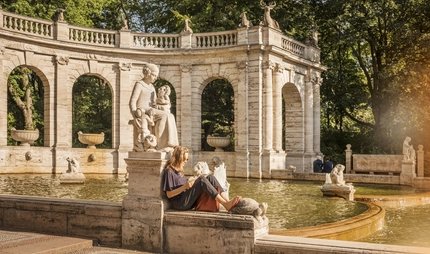
Luisenstädtischer Kanal
So many broken dreams
The water sparkles in the great Engelbecken at St. Michael’s Church. A fairy-tale Indian fountain splashes. Take a walk along the former canal.
Contrary to what its name suggests, the Luisenstädtischer Kanal is no longer a waterway. Instead, an idyllic place for nostalgic daydreaming is hidden between Mitte and Kreuzberg. You can take a wonderful stroll through the gardens.
A relic from times gone by
The Engelbecken is the only visible remnant of the Luisenstadt's historic canal. Since 1999, the water basin with its many fountains has once again been located in front of St Michael's Church. With a view of the glistening water, hours pass like seconds here on a quiet afternoon. The former artificial waterway between the Spree and Urbanhafen harbour once flowed into the Engelbecken basin and changed its straight course from there. Today, the drained canal bed is a green space with a recreational park.
The origins of the Luisenstädt Canal
In 1825, the idea of building a waterway through Luisenstadt, at the time a suburb of Berlin, was first mooted. Fifteen years later, city planner Lenné was commissioned by the Prussian king to draw up a design for connecting and relieving the Spree. However, the real reason for this was to employ the many unemployed people in the city with a building project. Construction of the 2 kilometre-long canal between the Landwehr Canal and the Spree began in 1848. Four turbulent years later, the work is completed and the first ships pass along the new waterway, which heads straight for St Michael's Church before turning off into the Engelbecken.
The canal is filled in again
A lot of noise and stench and too little shipping traffic were the reasons why the Luisenstädt Canal was razed to the ground again in 1926. The Engelbecken, however, remains as a central promenade. Garden architect Erwin Barth campaigned for the preservation of the canal, but the city of Berlin's plan could no longer be stopped. He draws up ideas on how the green space could be designed. One design envisages bringing a romantic, Indian flair to Berlin. However, the church opposes this. The next design included a park with a swimming pool, playground and a small Indian garden. Here too, Barth's plans were quickly thwarted due to a lack of funds. A few of Barth's ideas were finally realised in 1926 or reconstructed in the 1990s after being destroyed in the Second World War.
Walk through the old canal

The best way to get to know the gardens is to go for a walk. The route runs from the Schillingbrücke bridge on the Spree via Engeldamm, Leuschnerdamm, Legiendamm and Erkelenzdamm to the Urbanhafen harbour in the Landwehr Canal.



